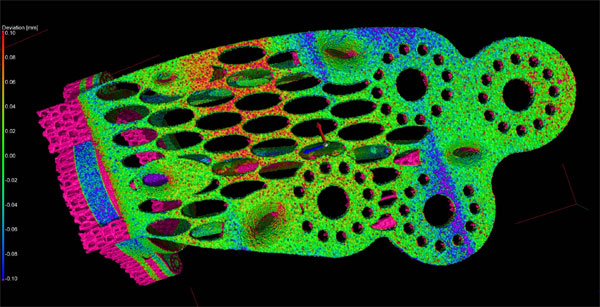Bruker SkyScan micro-CT scanners come with Bruker’s 3D.SUITE software for image reconstruction, inspection, visualisation and analysis.
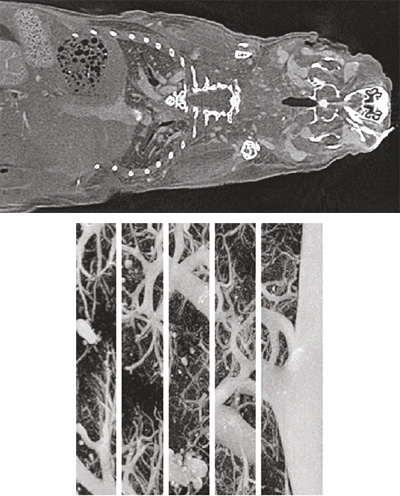
InstaRecon
World’s fastest micro-CT reconstruction software
- 10x – 100x faster than conventional CPU-based reconstruction.
- Uses patented algorithms for acceleration, instead of extra hardware (saving space and running costs).
- Available with all Bruker SkyScan instruments.
- Upgrades are possible for existing systems.
- Free one month demos available – contact us for details.
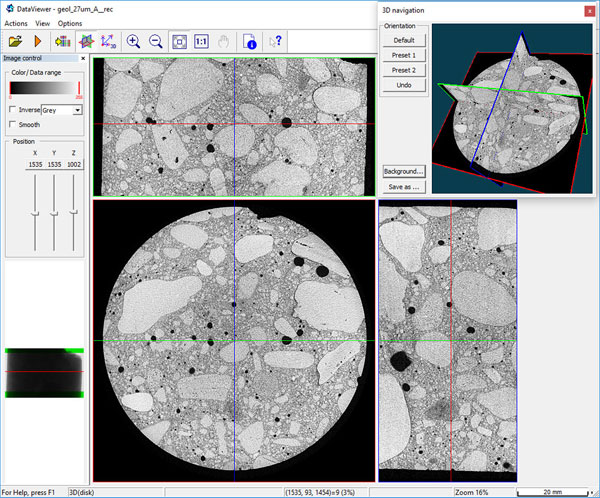
DATAVIEWER
3D inspection software
- View slice-by-slice movies and orthogonal projections.
- Process your images with smoothing, linear and non-linear grey scale transformations and colour coding.
- Differential image analysis between samples.
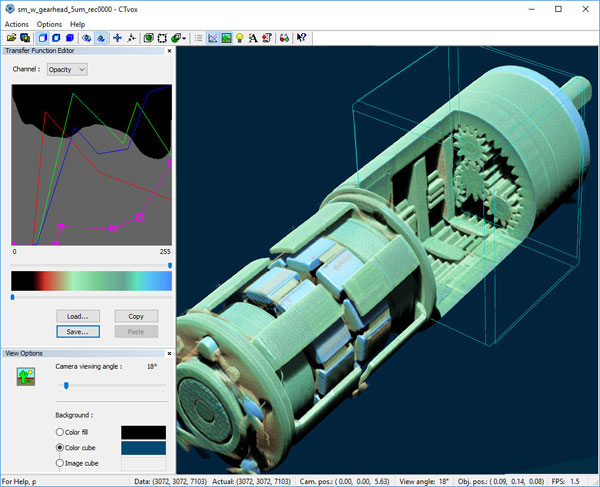
CTVOX and CTVOL
3D visualisation software
- Volume rendering – reconstruct your micro-CT data and view it as a realistic 3D object.
- Virtually fly around and through your sample and record movies.
- Render cut-away images.
- Edit colouring and transparency.
- Export surface rendered models in STL format for 3D printing, or other 3D CAD software.
- Compatible with mobile devices.
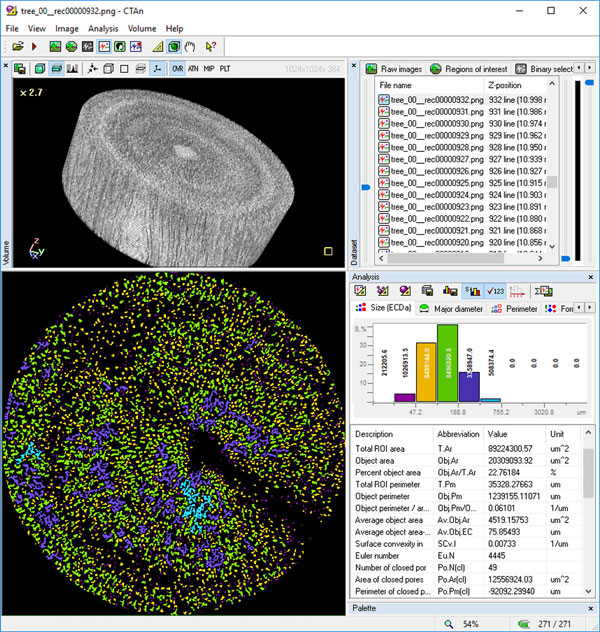
CTAN
3D image analysis software
- Density analysis
- Open/closed porosity
- 3D distances and angles
- Thickness and separation
- Select complex regions of interest
- Various thresholding methods, morphological operations and filter algorithms
- Colour code your sample by local orientation, thickness or separation
- Automated batch analysis
VGSTUDIO MAX
Alongside Bruker’s 3D.SUITE, data from SkyScan micro-CT scanners can also be processed with VGSTUDIO MAX, a software package from Volume Graphics for CT image visualisation and analysis of CT data. VGSTUDIO MAX is a high-end application with many useful capabilities:
- Measure difficult-to-access surfaces inside components
- Locate defects in castings, including pore cut prediction
- Defect analysis compliant with specifications P 201 and P 202
- Compare manufactured parts with CAD data, mesh data (.stl) and other voxel data
- Measure wall thickness and identify regions with an insufficient or excessive thickness or gap width
- Modular macros for automating processes
- Determine cell structures in porous foams and filter materials
- Calculate fibre orientation in composite materials – and other relevant parameters
- Virtual stress testing – non-destructively simulate mechanical stress from CT data
- Flow and diffusion experiments on porous materials, composites and more
